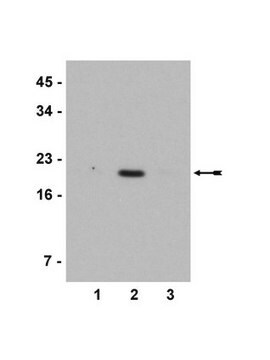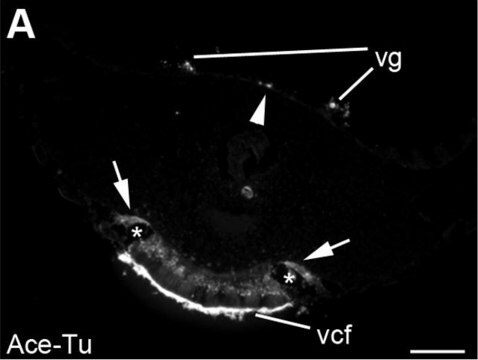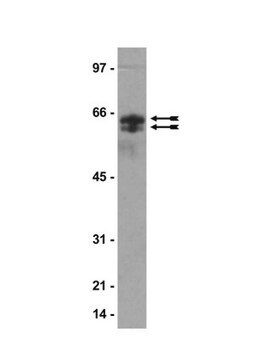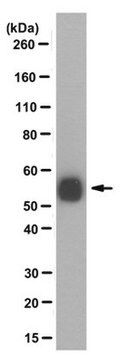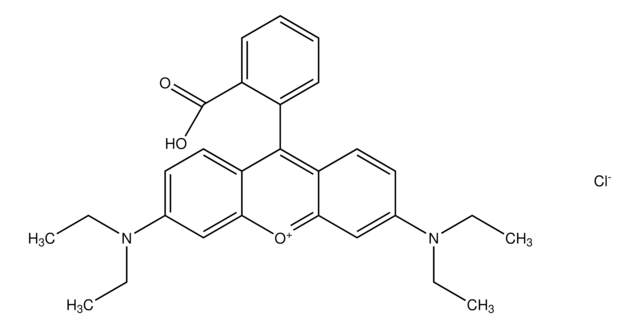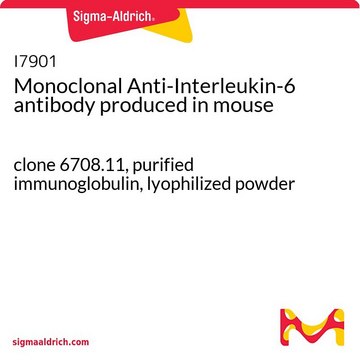MABS277
Anti-monoglycylated Tubulin Antibody, clone TAP 952
clone TAP 952, from mouse
About This Item
Polecane produkty
pochodzenie biologiczne
mouse
Poziom jakości
forma przeciwciała
purified immunoglobulin
rodzaj przeciwciała
primary antibodies
klon
TAP 952, monoclonal
reaktywność gatunkowa
human, sheep, sea urchin, porcine, mouse, Drosophila, snail
metody
dot blot: suitable
immunofluorescence: suitable
western blot: suitable
izotyp
IgG1κ
Warunki transportu
wet ice
docelowa modyfikacja potranslacyjna
unmodified
informacje o genach
human ... TUBA1A(7846)
Opis ogólny
Specyficzność
Can be used as a marker for motile cilia.
Immunogen
Zastosowanie
Dot Blot Analysis: A representative lot from an independent laboratory detected monoglycylated Tubulin in synthetic monoglycylated tubulin peptides (Bre, M. H., et al. (1996). J Cell Sci. (Pt 4):727-738.).
Western Blot Analysis: A representative lot from an independent laboratory detected monoglycylated Tubulin in a panel of total protein extracts from select species (Bre, M. H., et al. (1996). J Cell Sci. (Pt 4):727-738.).
Immunoflourescence Analysis: A representative lot from an independent laboratory detected monoglycylated Tubulin in lemur, human, and sea urchin spermatozoa (Bre, M. H., et al. (1996). J Cell Sci. (Pt 4):727-738.).
Signaling
General Post-translation Modification
Jakość
Western Blotting Analysis: A 1:50,000 dilution of this antibody detected monoglycylated Tubulin in 10 µg of Paramecium total cytoskeletal proteins.
Opis wartości docelowych
Postać fizyczna
Przechowywanie i stabilność
Inne uwagi
Oświadczenie o zrzeczeniu się odpowiedzialności
Nie możesz znaleźć właściwego produktu?
Wypróbuj nasz Narzędzie selektora produktów.
Kod klasy składowania
12 - Non Combustible Liquids
Klasa zagrożenia wodnego (WGK)
WGK 1
Temperatura zapłonu (°F)
Not applicable
Temperatura zapłonu (°C)
Not applicable
Certyfikaty analizy (CoA)
Poszukaj Certyfikaty analizy (CoA), wpisując numer partii/serii produktów. Numery serii i partii można znaleźć na etykiecie produktu po słowach „seria” lub „partia”.
Masz już ten produkt?
Dokumenty związane z niedawno zakupionymi produktami zostały zamieszczone w Bibliotece dokumentów.
Nasz zespół naukowców ma doświadczenie we wszystkich obszarach badań, w tym w naukach przyrodniczych, materiałoznawstwie, syntezie chemicznej, chromatografii, analityce i wielu innych dziedzinach.
Skontaktuj się z zespołem ds. pomocy technicznej